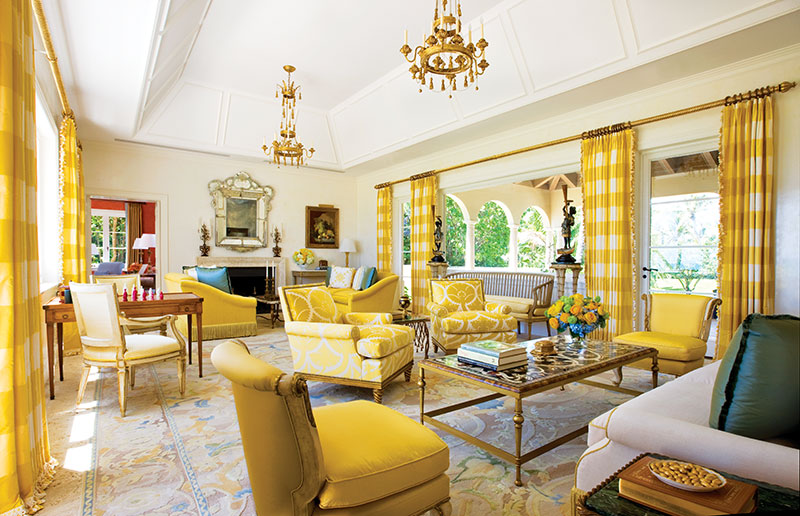When leading designers Ellie Cullman and Alyssa Urban glimpsed the interior of a gracious Mediterranean-style and oceanfront home near Palm Beach, Fla., they saw a treasure trove of Italianate furniture and fine art.
The owners, a retired couple with children and several grandchildren, needed their vacation home enlarged and refashioned for year-round living. Right away, Cullman and Urban knew that their clients’ furnishings would be a superb starting point.
“It was the third project we completed for the couple,” says Cullman, cofounder of Cullman & Kravis, based in New York City, and one of Ocean Home’s Top 50 Interior Designers for 2016.
Urban embraced the project lead, armed with her experience in set design, love of Italian art and antiques and impeccable credentials as a design partner at the storied firm, and set about infusing the home with a warm familiarity that proved to be a natural match.
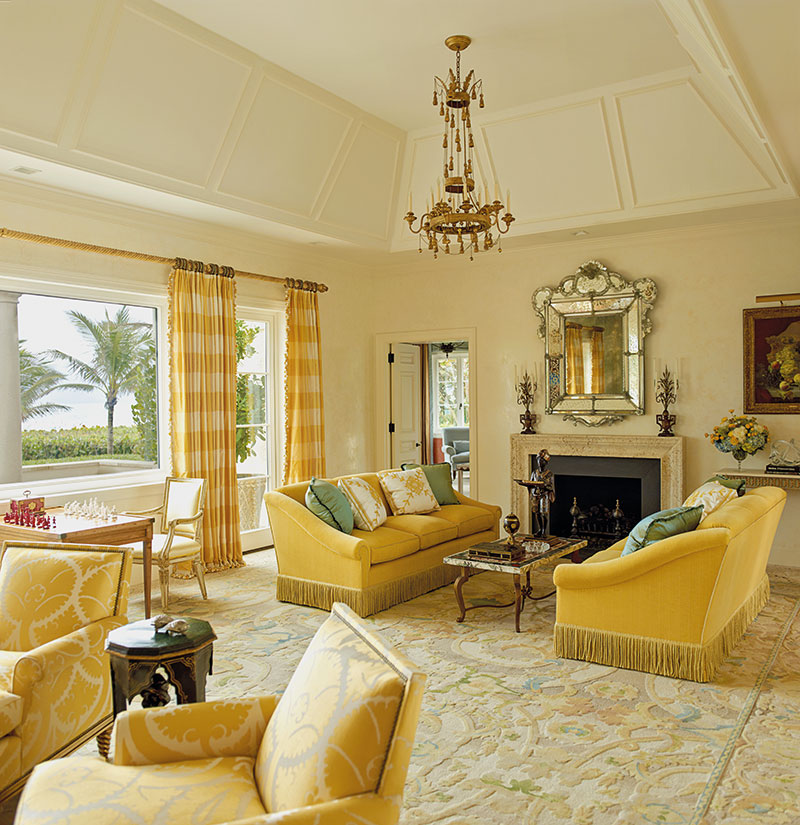

Today the 4,000-square-foot residence, built in the 1930s, is an alluring blend of sophistication and comfort, combining classic style, artful detailing and colors so enchanting they could be the backdrop for a blissful dream.
The design team at Cullman & Kravis, including senior designer Katie Sutton, focused on the home’s soft furnishings and the introduction of some antique and custom-made pieces, working around the clients’ cherished collection of furniture and fine art.
The interior’s plentiful windows, traditional lines and stucco walls were an ideal canvas for the Old World ambience that blossomed.
In the living room, sumptuous Christopher Norman plaid silk taffeta curtains – framing tall windows and beautiful ocean views – provided inspiration.
It’s unusual to design a color scheme around curtains, Cullman admits, but the homeowners were captivated by the yellow and white taffeta. “People usually start with an upholstery fabric or a carpet and then design around it,” she says, “but the curtains were the genesis of this living room.”
The room’s primary color – which Urban lightheartedly describes as “taxi cab yellow” – looked incredibly vibrant in Cullman & Kravis’ New York office but proved perfect in its Florida setting.
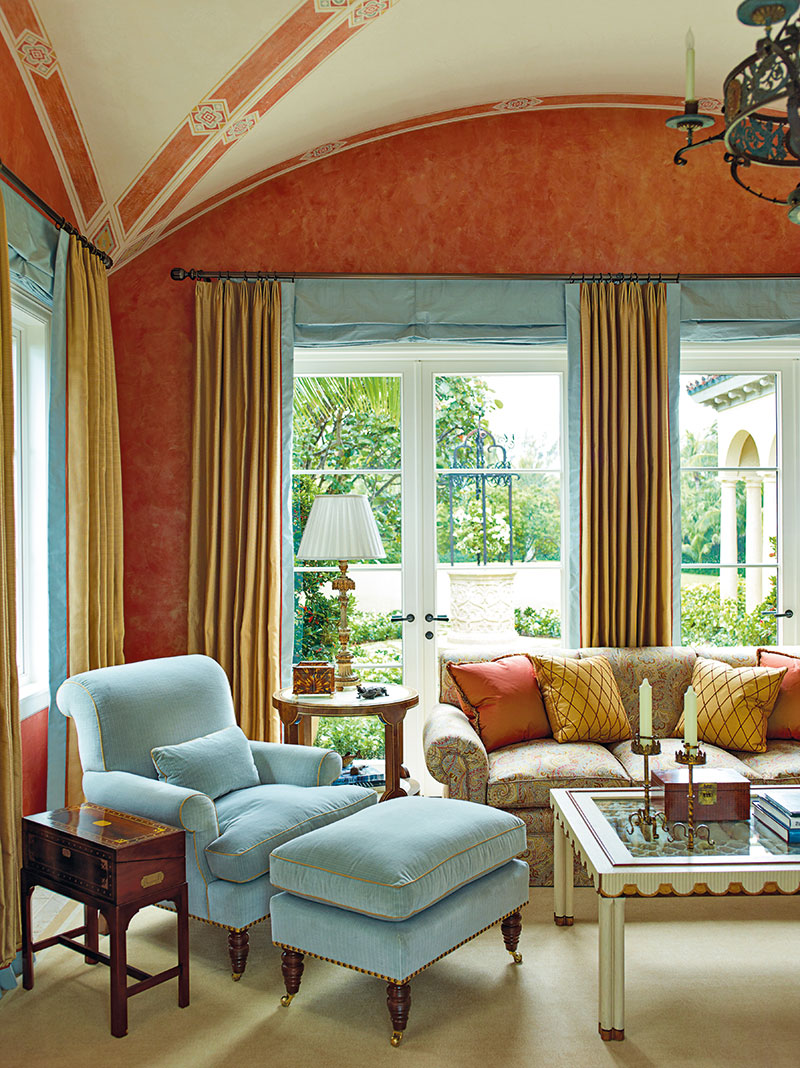

A custom Polonaise hand-woven rug provides a neutral element, and new sofas and Jansen armchairs were custom built for the room and upholstered by Cullman & Kravis.
The armchair upholstery – silk damask with an intriguing stylized pattern – lends a chic Italian touch, complementing the new sofas, edged in bullion trim. Other Italian accents, including an oversized Venetian mirror and a pair of blackamoors, add to the European aesthetic.
Urban suggested relocating an early-19th-century French tric-trac table (a game table that reverses to reveal a plain leather surface) to the living room to let it shine. The table, made of fruitwood with a light finish, is very rare, she explains.
The base of another family treasure, an Italian pietra dura coffee table, was replaced with a metal version for “a lighter, airier feel,” Urban says. A pair of chandeliers, which Cullman & Kravis had carved and gilded in keeping with one that a colleague had seen in a San Francisco antiques store, illuminates a painting of Venice’s Grand Canal.
The adjoining dining room carries the same classic tones, with walls hand painted in a damask stencil and overlaid with copper and gold by Uriu LLC – a fine decorative finishes specialist based in New York City – to lend a Florentine feel.
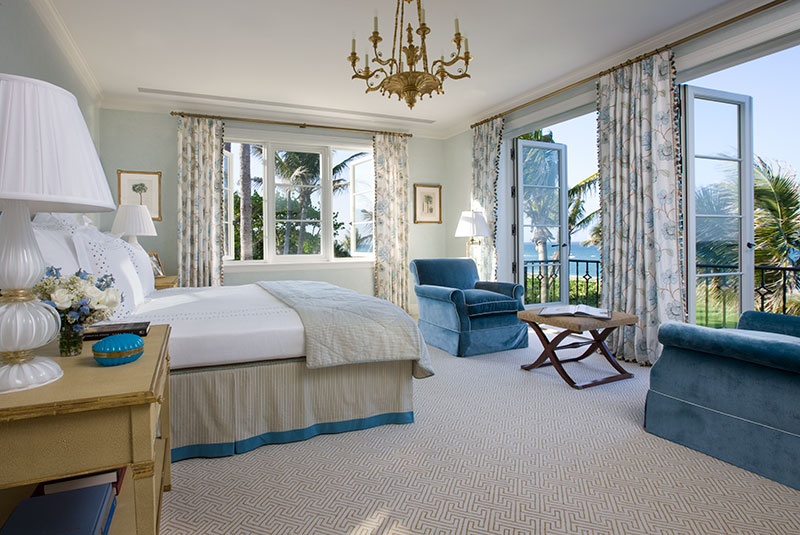

Hues of yellow, green and blue are favorites of the owners and reflect the ocean and lush greenery outside but also encourage a warm and welcoming informality inside. Only the study – decorated in vivid vermillion red – breaks from the palette.
Rattan chairs with a sunburst back, grouped around a table in the breakfast room, were modeled after chairs that Urban and Cullman had seen in a photograph of the home of art collector Marella Agnelli, a pillar of post-war Italian society.
For Urban, the clients’ inherent style sense and collection of classic pieces made the project a joy. “Shopping for antiques, lighting and pieces that were made in the 18th and 19th centuries offers a very different awareness,” she says.
Urban’s husband is German, so she often finds herself in Europe, and what she sees there deeply influences her style. “To be able to see history and all the craftsmanship is wonderful,” she says. “Today it’s difficult to find that kind of quality. Seeing it in real life, you have a greater appreciation for the historical tradition of decorative arts.”
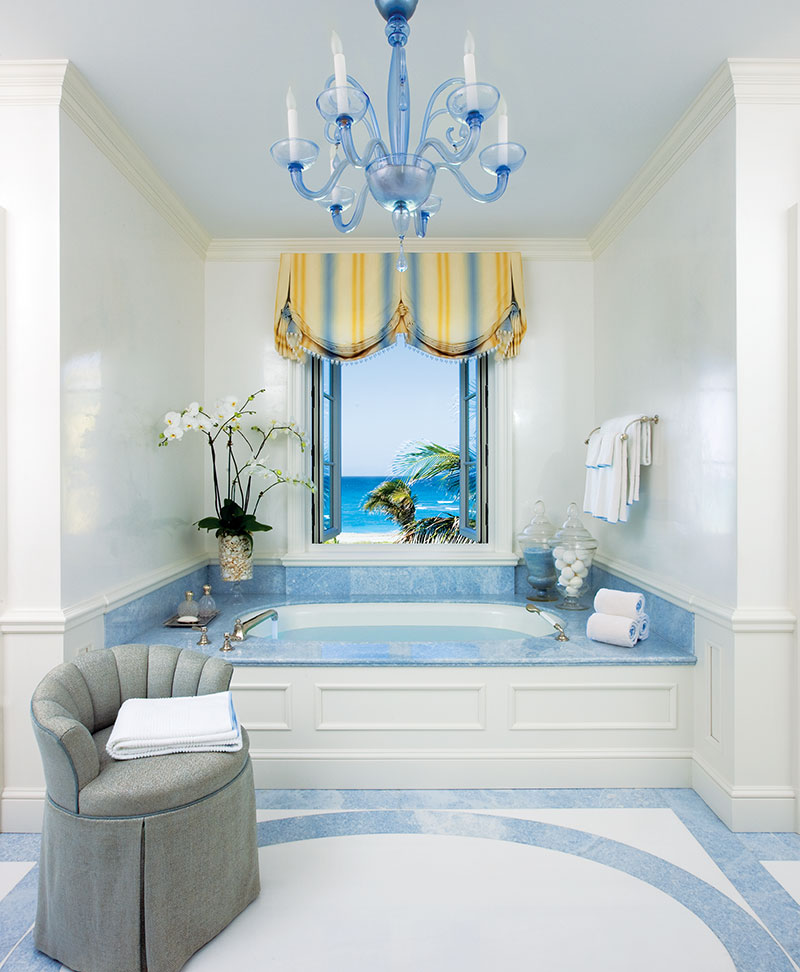

Cullman says the project’s success hinged on working with highly skilled professionals outside the firm, notably Jeffery Smith, AIA, of Smith Architectural Group in Palm Beach, who designed the home’s renovation.
His ideas, including a major renovation of the master suite, kitchen area and adjacent rooms, blend fine Old World styling with an airy, contemporary feel. “His work was seamless,” Cullman says.
As always, the design process within Cullman & Kravis was close and collaborative, a hallmark of the company’s egalitarian spirit. “The success of our designs is always dependent on our interaction with each other and, of course, with the homeowners,” Cullman says.
Cullman & Kravis has designed the interiors of hundreds of private homes across the country since its inception 30 years ago. The firm has received many high-profile accolades, including appearances in Architectural Digest’s coveted AD100.
The award that is most significant to Cullman is the Albert Hadley Lifetime Achievement award, bestowed on her in March by the New York School of Interior Design. “It was a tremendous thrill,” she says.
Considering that Cullman & Kravis has earned immense respect from the design world through the years, the firm’s beginnings were surprisingly inauspicious.
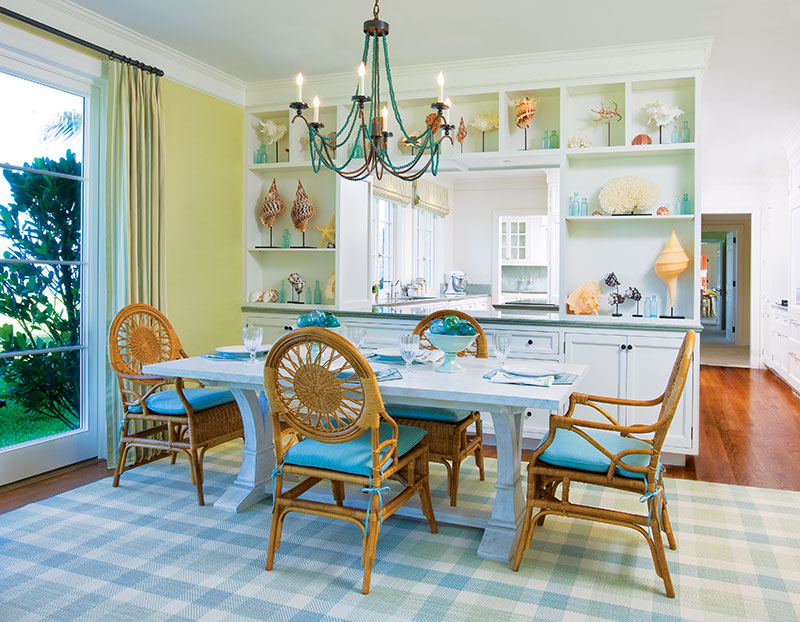

In October 1984, best friends Ellie Cullman and Hedi Kravis were living in the swirl of Manhattan society, raising children, attending glamorous events and immersing themselves in charity work.
Craving a new project, the enterprising pair wrote a movie script and took it to film producer Stanley Jaffe, who had won an Academy Award for Kramer vs. Kramer a few years before.
Jaffe turned down the script but, as Cullman recalls, asked them to design the interior of his new home. “Stanley determined that we had absolutely no talent at screenwriting,” Cullman says, laughing.


The design duo established their namesake firm and success came swiftly. Then Kravis became ill and died in 1997.
Cullman always cites her late business partner as one of the most important influences on her design. She also credits her current colleagues – “who keep things young and fresh” – as an equally important component.
Today, besides heading her firm, Cullman sits on the boards of the Film Society of Lincoln Center, Friends of Florence and Kips Bay Boys & Girls Club. She also has coauthored two books on design, Decorating Master Class and The Detailed Interior.
Whether designing a home or managing the firm’s work, Cullman displays a gift for innate wisdom. When she talks about the spirit she embodies in design projects, she might be talking about the road we all take in life. As she says: “It’s a journey.”
Ellie Cullman & Alyssa Urban
For more information, visit cullmankravis.com.
Image Credits: Photos by Eric Piasecki.


